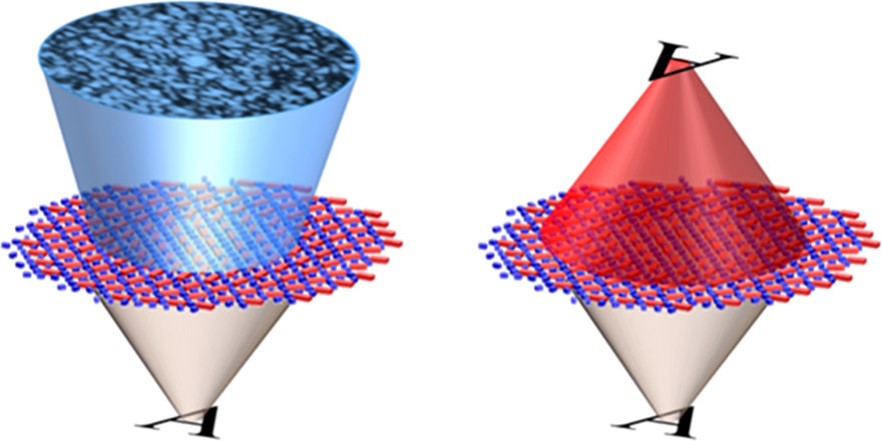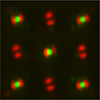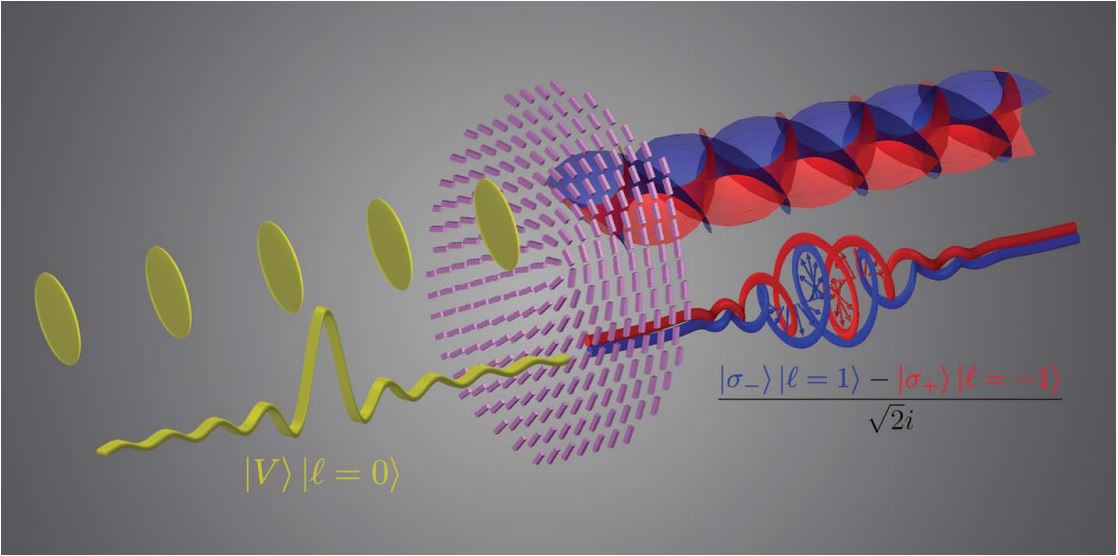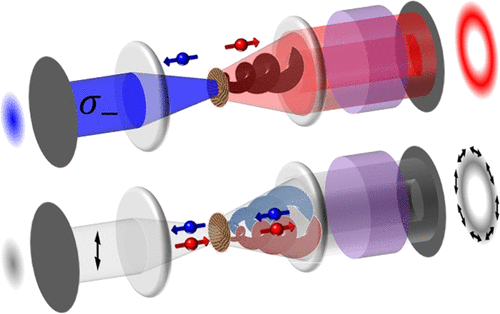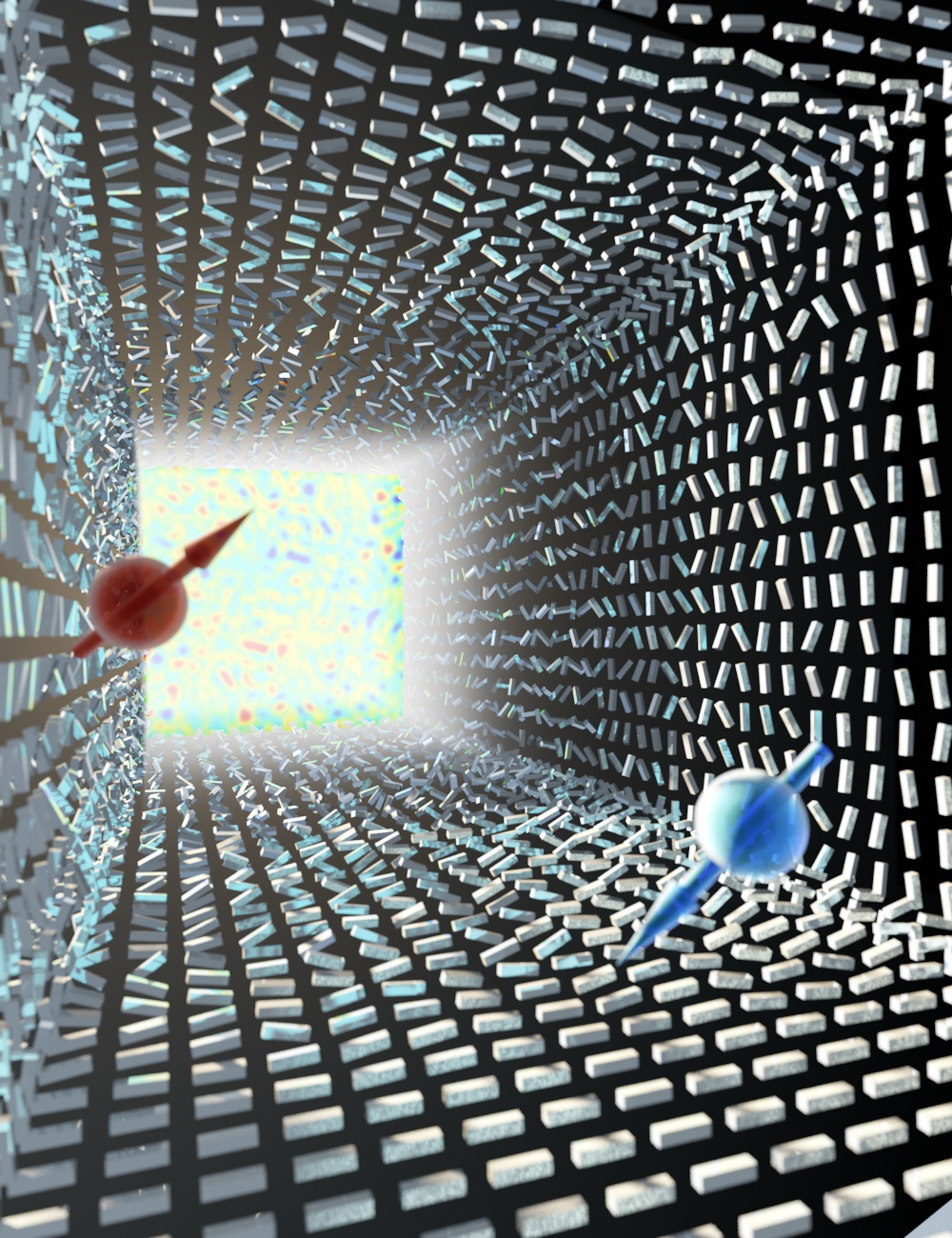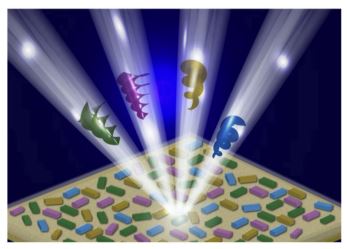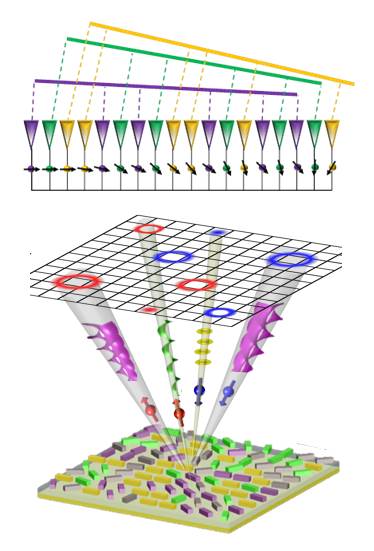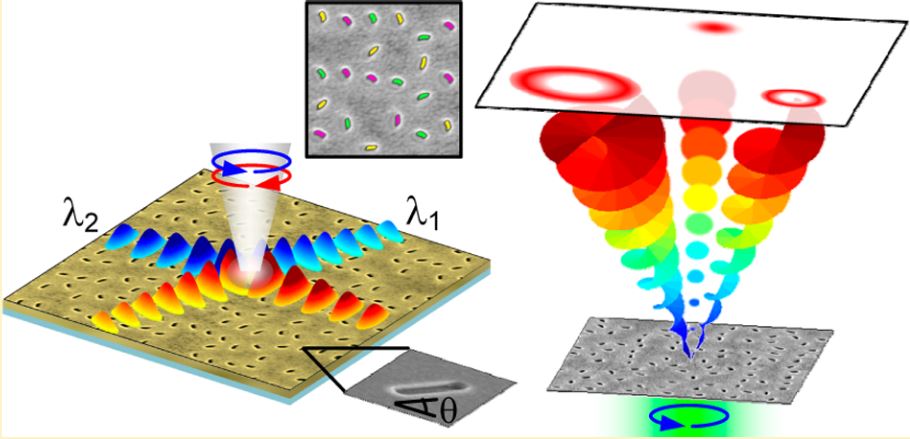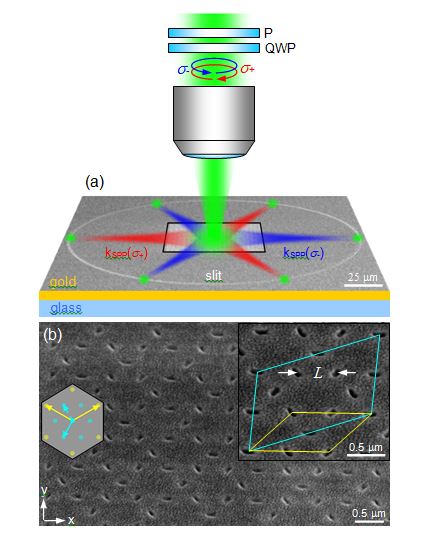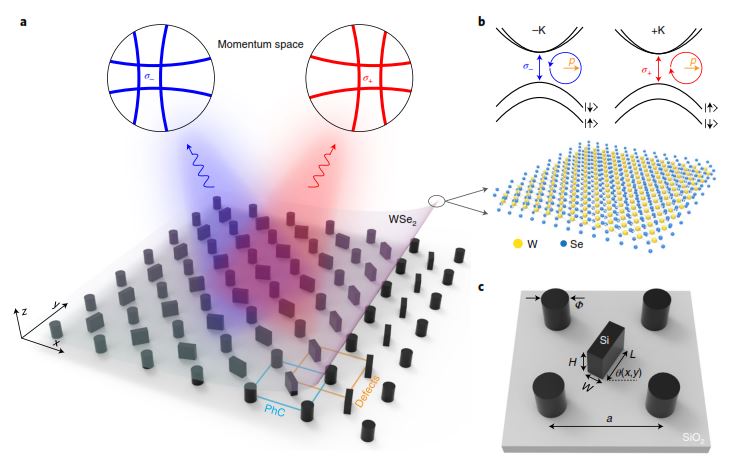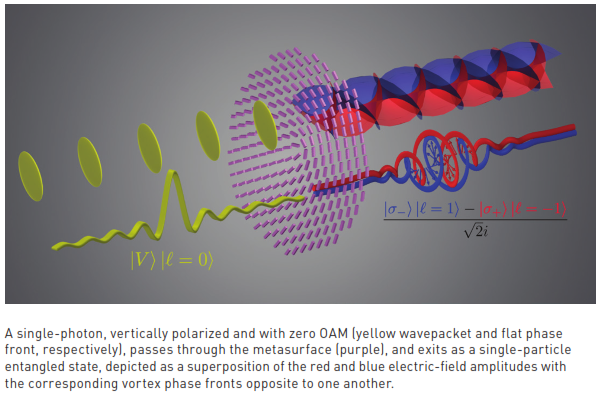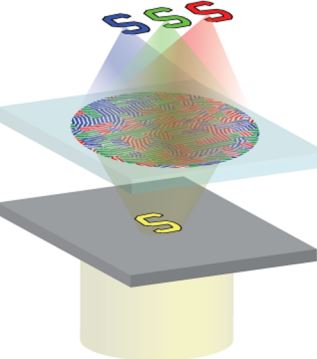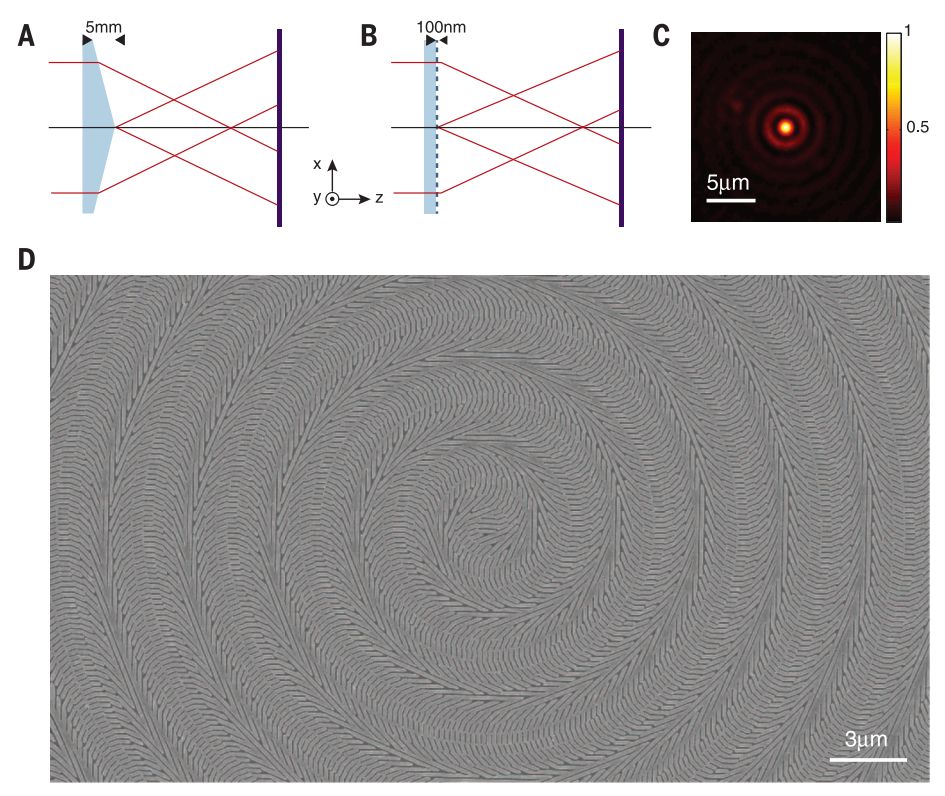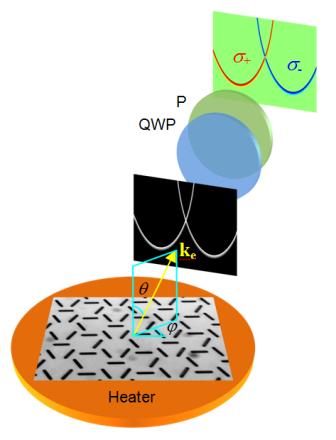Atomic-Scale Photonics Laboratory
Russell Berrie Nanotechnology Institute – Helen Diller Quantum Center
Technion – I.I.T.
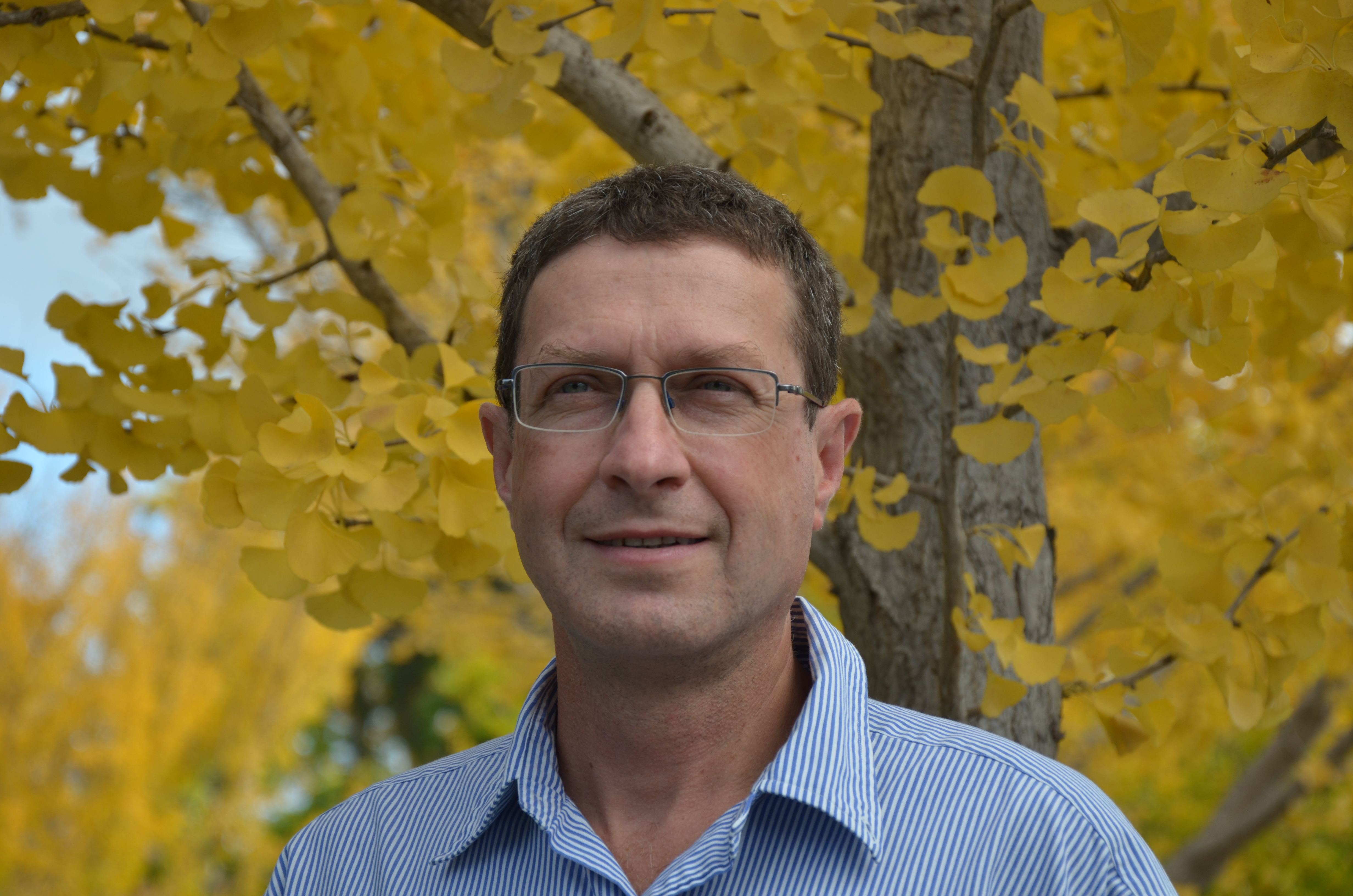
- E-mail:
mehasman@technion.ac.il - Phone: +972-4-8292916
- Fax: +972-4-8295711
- Postal Address:
Kahn building, Technion – I.I.T.
Haifa 3200003
Israel - Office: Kahn 319
Erez initiated and demonstrated the first metasurface, pioneering the field of optical metasurfaces [the first metallic metasurface: Opt. Lett. 26, 1424 (2001) 357 citations; the first dielectric metasurface: Opt. Lett. 27, 1141 (2002) 595 citations; the first orbital angular momentum metasurface: Opt. Lett. 27 1875 (2002) 321 citations; the first vectorial vortex metasurface Opt. Lett. 27, 285 (2002) 510 citations]. In general, a metasurface can be described as an array of nanoantennas, serving as local phase shifters. Such nanopatterned structures are used for complex light manipulations, paving the route for the generation of multifunctional and quantum metasurfaces, and as a platform to study various physical phenomena.
His research group has made significant contributions in the field of nanophotonics, metasurfaces and radiative heat transfer from nanoscale structures. Among his most significant contributions are the discoveries of the Pancharatnam-Berry phase metasurfaces, (PBM, Geometric phase) utilizing the photonic spin orbit mechanism [Opt. Lett. 26, 1424 (2001); Opt. Lett. 27, 1141 (2002)], geometrodynamics of spinning light [Nature Phot. 2, 748 (2008) 748 citations], spin Hall effect in plasmonics [Phys. Rev. Lett. 101, 043903 (2008) 365 citations; Phys. Rev. Lett. 101, 030404 (2008) 290 citations], photonic Rashba effect [Science 340, 724 (2013) 387 citations] and the first proposing and demonstrating the shared-aperture multifunctional metasurfaces [Science 352, 1202 (2016) 342 citations].
Moreover, Erez presented the first meta-lens [Appl. Phys. Lett. 82, 328 (2003) 375 citations], the first dielectric gradient metasurface for the visible spectrum [Science 345, 298 (2014) 1679 citations] (in collaboration with Prof. Mark Brongersma), and the first observation of optical transition from spin Hall to random Rashba effect induced by subwavelength-scale disordered geometric phase metasurface [Science 358, 1411 (2017)]. Erez presented the first experimental observation of quantum entanglement using metasurfaces – the use of a dielectric metasurface to generate entanglement between the spin and orbital angular momentum of photons (in collaboration with Prof. Mordechai Segev) [Science 361, 1101 (2018) 139 citations]. These results show that metamaterials are suitable for the generation and manipulation of entangled photon states, introducing the area of quantum optics metamaterials, [selected by OSA as one of the “hottest” research in 2019, (Optics in 2019), OPN, Optics & Photonics News, December 2019, 30, 46 (2019), “Quantum Photonic Metamaterials”].
Erez reported in Phys. Rev. Lett. (2019) on a topological mechanism for spin-dependent photonic transport – the first observation of photonic topological defects of bound vortex pairs and unbound vortices generated from a two-dimensional array of nanoantennas, The topological phenomena—creation of bound vortex pairs and unbound vortices—indicate the universality of the topological effect for particles of different natures, [Phys. Rev. Lett. 123, 266101-1 266101-5(2019)]. Recently, Erez’s group reported in Nature Nanotechnology the first stochastic photonic spin Hall effect arising from space-variant Berry–Zak phases, which are generated by disordered magneto-optical effects. This spin shift is observed from a spatially bounded lattice of ferromagnetic meta-atoms displaying nanoscale disorders, [“Probing nanoscale fluctuation of ferromagnetic meta-atoms with a stochastic photonic spin Hall effect”, Nature Nanotechnology 15, 450 (2020)]. Erez’s approach may be used for sensing deep-subwavelength disorders by actively breaking the photonic spin symmetry and may enable investigations of fluctuation effects in magnetic nanosystems.
Recently, Erez reported, in Nature Nanotechnology on discovery of the photonic Rashba effect from valley excitons in a WSe2 monolayer, which is incorporated in the Berry-phase defective Photonic crystal. This geometric-phase-induced valley separation establishes a multifunctional interface between valleytronics and photonics via all-silicon nanostructures, which may facilitate viable applications of valleytronics in semiconductor platforms [Nature Nanotechnology “Photonic Rashba effect from quantum emitters mediated by Berry-phase defective photonic crystal”, 15, 927-933 (2020)].
He was awarded the Fellow of OSA 2013, “for pioneering contributions in the field of nano-photonics, and specifically for developing a new branch in optics – Spinoptics: the symmetry breaking in nanostructures due to spin-orbit interaction”. Spinoptics has opened a new avenue for controlling light in nanometric and atomic-scale optical devices. On the Technion level, he has won 2002 Salomon Simon Mani Award for Excellence in Teaching and the Henry Taub Prize for Research Excellence (2009). He has published over 130 journal papers, book chapters, and hundreds of conference papers. Erez served as an associate editor for Opt. Express (OSA), and was Co-Chair and member of program committees of several international conferences and workshops.
Current Research Interests
Atomic-scale photonics, Nanophotonics, Metasurfaces, Plasmonics, Spinoptics, Quantum photonics, Quantum materials, Quantum sensing and devices, Low dimensional materials, 2-D materials and devices, Quantum light sources, Quantum Metamaterials and Metasurfaces, Topological photonics
Recent publications

Nature Materials (2025) https://doi.org/10.1038/s41563-025-02413-5 [pdf]
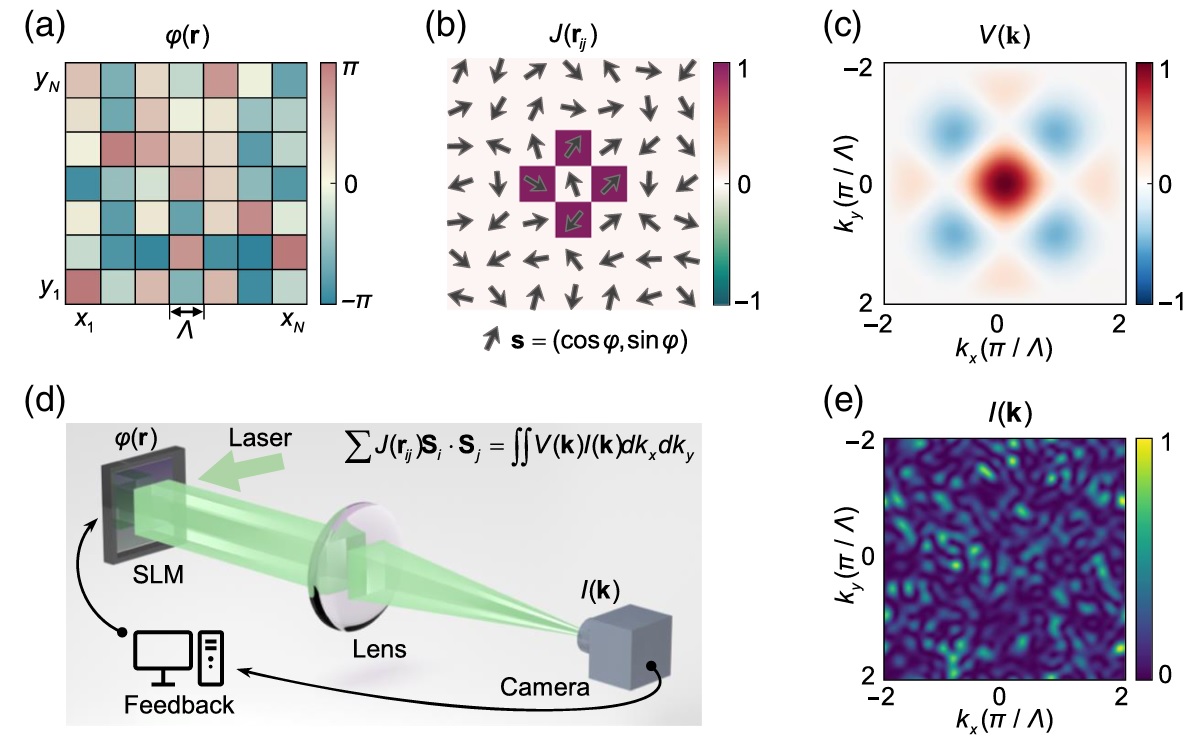
Science 381, 1429 (2023) [pdf][Sup]
 (Credit: Ariana Hasman)
(Credit: Ariana Hasman) Light sources with dynamically controlled polarization states are valuable for applications in sensing, spectroscopy, and optical communication. Typically, a magnetic field is required to select the polarization state, but that is not practical in a nanophotonic setting. The band structure of two-dimensional materials can have a valley degree of freedom in which selection for a particular valley results in polarized emission. Duan et al. show that the integration of a monolayer of tungsten disulfide with a carefully designed photonic crystal cavity enhances the light-matter coupling, resulting in lasing with valley-addressable polarized output. Operation at room temperature without the need for a magnetic field should be useful in developing advanced nanophotonic light sources. — Ian S. Osborne
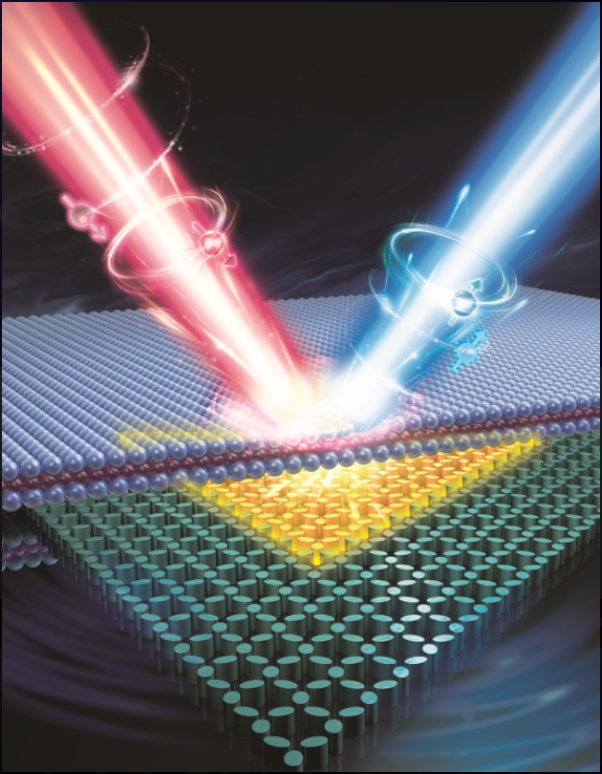 (Credit: Scholardesigner co, LTD)
(Credit: Scholardesigner co, LTD) Nature Materials, 22, 1085 (2023)
[pdf][Sup]


Nature Nanotechnology 15, 450 (2020) [pdf][Sup]

Phys. Rev. Lett. 123, 266101 (2019) [pdf][Sup]
